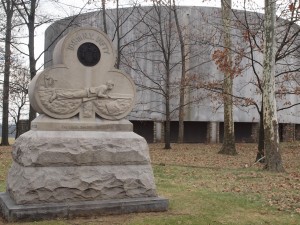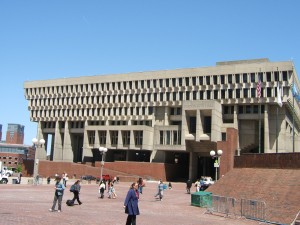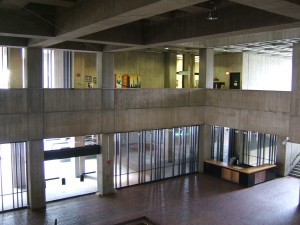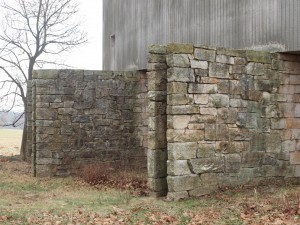
Neutra’s modernist icon, the 1961 Gettysburg Cyclorama, was demolished last week after a decade of legal battles.
Several years ago I organized a two-day symposium for thought leaders in the sustainable preservation field and one of our speakers, a very powerful leader of a world-famous institution, presented his idea to save the world – “Starting tomorrow we should never build anything new ever again.” Theoretically that complements something I sometimes say, “The greenest world is one without us in it.” Many studies have now shown that over 50% of the greenhouse gas emissions in the US come from the operation and construction of buildings. And given the fact that 85% of our commercial building portfolio in the United States was built after 1945, the assumption can then easily be made that buildings from the modern era are the biggest problem we have from a climate change standpoint. Many would like you to think they’re also the biggest problem we have in terms of aesthetics.

Boston City Hall and its plaza have been the bellwether of discussions regarding the pros and cons of “brutalism.”
The true story is, of course, much more nuanced. Many modern buildings were built with experimental materials or approaches, which haven’t weathered well or worked as we thought they would – material-wise or conceptually. Many were built specifically to be disposable, but we now find ourselves dealing with them 50 years later. Despite all these facts, I LOVE modern buildings. I love the creativity and simplicity of many of them. I love the fact that our parents envisioned and created a brand new world. I love them because I see the possibilities and opportunities. Does it make sense to try to save them all? Of course not. Just like it doesn’t make sense to try to save everything built before 1945. I have no problem with obliterating dryvit strip malls. But I am morally and ethically offended by the disregard and obliteration of buildings that are works of art, and many of them are. Did some of them demolish traditional buildings and streetscapes? Yes! Did many of them destroy historic patterns of walkability? Yes! And your point is?
Brutalism Can Be Beautiful
A few occurrences last week have kept me up at night pontificating about modernism, in particular “brutalism”. The demolition of Neutra’s Gettysburg Cyclorama last week offends everything I care about with “design.” I also was part of a Facebook exchange last week regarding the Boston City Hall. A friend had posted a photo of it since he was visiting Boston. I thought that meant he liked it. So I waxed poetic about it. Instead I discovered he didn’t like it and many of his friends (most of whom I do not know) felt compelled to display their hatred for it and their hatred for the idea that anyone could find this brutalist landmark beautiful. Granted “Brutalism” or “Beton Brut” (raw concrete) is admittedly a hard sell for many people. But what I don’t get is why people feel compelled to want to just remove anything they don’t like from the face of the earth. Do people hate brutalism because of the word? Sadly the term gained wide currency when the British architectural critic Reyner Banham used it in the title of his 1966 book, The New Brutalism: Ethic or Aesthetic?, to characterize a somewhat recently established cluster of architectural approaches, particularly in Europe. Reyner Banham is my all-time favorite architectural theorist so it saddens me that his word for this style has become a way to denigrate an entire era of architectural thinking and designing.
In our current atmosphere of sequestration and blue versus red states, I find it distressing that everything seems to have become black and white. I used to think that the world was only black and white and then someone important in my life explained to me that the world was really gray and treating it that way was a much healthier way to live. It took me a while to apply that to my life, but I think we’d be in much better shape, economically, politically and architecturally, if more of us accepted that gray was just fine. It doesn’t have to be either or. It’s okay to admire pediments and Ionic columns AND curtain walls and raw concrete. You can be an active member of DOCOMOMO AND the Institute of Classical Architecture & Art. It’s okay to be sad that blocks of traditional buildings were demolished to make way for the modernist Empire State Plaza of Albany and still admire that same Empire State Plaza.
So when my sustainable preservation colleague suggested that we should never build another building ever again, I wholeheartedly disagreed with him. What would be the point of being here if we could never invent or innovate ever again? Does that mean I don’t love what we have? Of course not! My firm’s tagline is, after all, “Greening What’s Already Here.” So, while green has been the color of the decade, maybe gray should be the color of the next.
And if you’d like to “subscribe” or follow my blog, True Green Cities, please sign up though the “Subscribe” button at the bottom left of this page. You’ll receive a daily recap when new blogs are posted. Or sign up for the RSS Feed top right.



